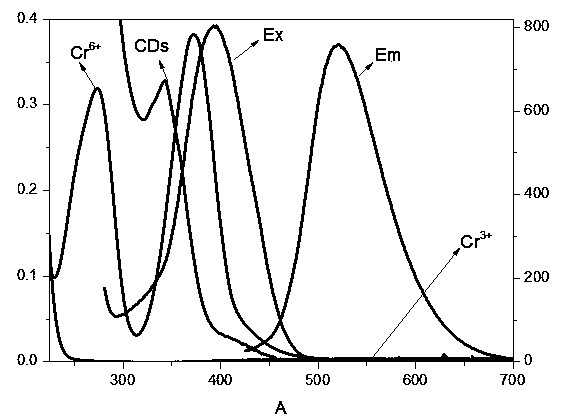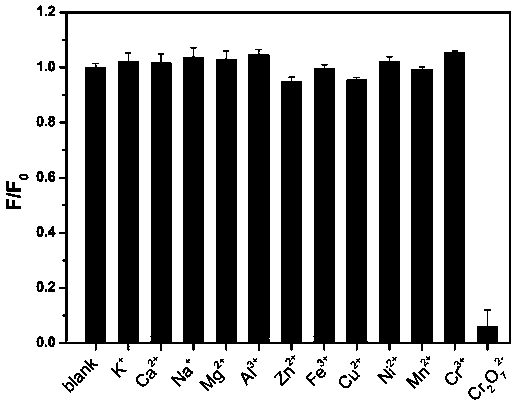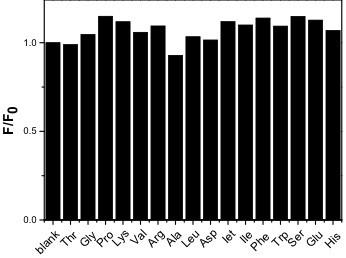Preparation method and application of fluorescent carbon dot for specifically identifying Cr<6+> and vitamin C
A technology of fluorescent carbon dots and vitamins, applied in chemical instruments and methods, fluorescence/phosphorescence, nano-carbon, etc., can solve the problem of only ingestion from food, achieve specific detection and rapid identification, easy operation, simple synthesis Effect
- Summary
- Abstract
- Description
- Claims
- Application Information
AI Technical Summary
Benefits of technology
Problems solved by technology
Method used
Image
Examples
Embodiment 1
[0042] Carbon dot synthesis, the steps are as follows:
[0043] Dissolve 2.4g of anhydrous citric acid in 16mL of ultrapure water, then add 800µL of N,N-dimethylaniline liquid, and heat the mixture to 160 o C, the reaction was continued for 10 hours, and the reaction solution was ultra-filtered and separated by column chromatography to obtain the carbon dot.
Embodiment 2
[0045] Carbon dot synthesis, the steps are as follows:
[0046] Dissolve 0.6g of anhydrous citric acid in 16mL of ultrapure water, then add 800µL of N,N-dimethylaniline liquid, and heat the mixture to 160 o C, the reaction was continued for 10 hours, and the reaction solution was ultra-filtered and separated by column chromatography to obtain the carbon dot.
Embodiment 3
[0048] Carbon dot synthesis, the steps are as follows:
[0049] Dissolve 4.8g of anhydrous citric acid in 16mL of ultrapure water, then add 800µL of N,N-dimethylaniline liquid, and heat the mixture to 160 o C, the reaction was continued for 10 hours, and the reaction solution was ultra-filtered and separated by column chromatography to obtain the carbon dot.
PUM
 Login to View More
Login to View More Abstract
Description
Claims
Application Information
 Login to View More
Login to View More - R&D
- Intellectual Property
- Life Sciences
- Materials
- Tech Scout
- Unparalleled Data Quality
- Higher Quality Content
- 60% Fewer Hallucinations
Browse by: Latest US Patents, China's latest patents, Technical Efficacy Thesaurus, Application Domain, Technology Topic, Popular Technical Reports.
© 2025 PatSnap. All rights reserved.Legal|Privacy policy|Modern Slavery Act Transparency Statement|Sitemap|About US| Contact US: help@patsnap.com



